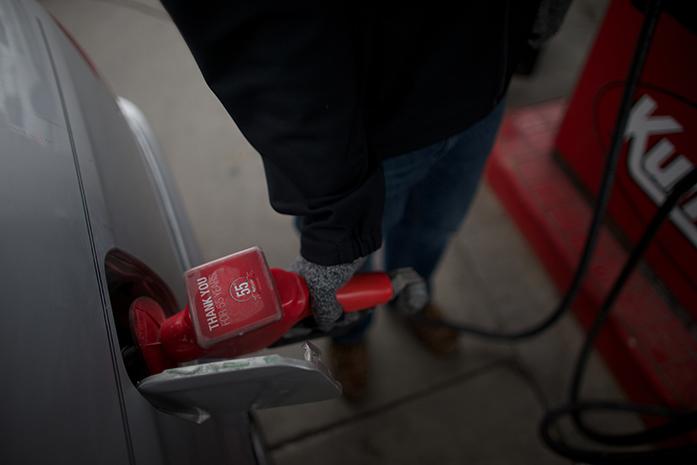Gasoline is, by nature, volatile. Where technology has been able to convert and safely integrate the highly combustible resource, the marketplace has yet to find a similar method of mitigation.
Recently, gas prices skyrocketed for millions of Midwesterners. On the night of Aug. 11, gas prices in locales around the Great Lakes rose 40 cents overnight. The cause of this swing was a malfunction in a BP processing plant in Whiting, Indiana. The plant is the largest in the Midwest, and while being repaired, its output has been halved. The effects of such a cut are far-reaching, as oil is essential in almost every aspect of the economy — shipping, industry, heating and lighting, and travel to name a few. But does it have to be essential? Especially for the average consumer, most affected at the gas pump?
Iowa is fortunate enough to avoid this rise in gas prices. The affected areas are largely Illinois, Indiana, Kentucky, and Ohio. That doesn’t mean a similar upheaval couldn’t happen here as well. Between dependency on OPEC countries and the environmental impact on U.S. soil, there could be an alternative to such unstable market mechanisms.
Iowa is in a unique and potentially important position. The state is a place in which alternative energies are being harnessed in a percentage higher than in most of the states. Should there be an initiative to increase the use of electric-powered vehicles, the state could wean itself off from a chemical that dictates the machinations in the rest of the world on a day-to-day basis.
The problems that plagued electric and hybrid cars just five years ago are in the past. Longer battery life, far greater mileage, and lowered cost makes them a viable option when purchasing a new car or a fleet of cars. The University of Iowa has taken steps in this direction by adding vehicles to its fleet that are hybrids, combining electricity and gas to diminish the carbon footprint left by traditional vehicles. Public initiatives to increase interest in electric cars could be the next step in this evolution.
Beyond financial incentives to increase the number of hybrid or electric cars on Iowa’s roads, what is needed the most is infrastructure. Charging stations are a more common luxury, especially in places such as the Newbo District of Cedar Rapids. This summer, a new Tesla station opened outside of Mount Vernon, a move by Tesla to ensure drivers they will have access to the energy required for travel. The move to make now is to transform the electric charging station into a standard convenience. Consider the physical location Iowa holds — it is the crossroads of the nation. This summer, as in every other, travelers from far and wide have filled the highways on trips to family, friends, or vacation destinations. Iowa’s central location makes it an even better place to concentrate electric stations for long-distance travelers.
More electric stations means more electric cars sold. Every time a car is fueled with petroleum, the mere existence of a charging station nearby would be advertising enough. Policies that give electric cars more appeal to consumers will ultimately improve carbon emission levels. The state government has the power to create these incentives and shape a path to a sustainable, cutting edge Iowa.
The Daily Iowan Editorial Board believes that Iowa could, and should, become a pioneer in both electric-transportation technology and independence from foreign and unpredictable gasoline. With a continued and increased interest in wind- and solar-energy sources, coupled with an expansive electric and/or hybrid car base, Iowa could become the model for a future United States: one less susceptible to foreign oil and the environmentally devastating effects of oil production and consumption.



